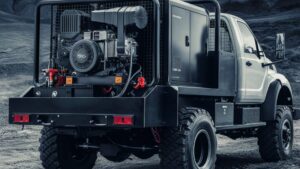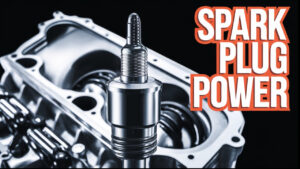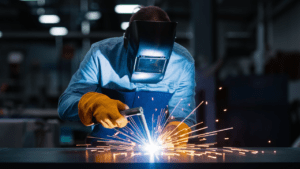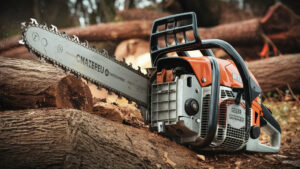A mechanical pencil works by using a thin lead that is pushed through a tip as needed. A spring mechanism controls the lead advancement with each click.
Recommended Best Mechanical Pencil 2025
| Recommendation | Product |
| Best Overall | Paper Mate Clearpoint Mechanical Pencils |
| Popular Choice | Nicpro 35PCS Art Mechanical Pencil Set |
| Best Value | Four Candies 0.7mm Mechanical Pencil Set with Case |
| Best Budget | BIC Xtra Smooth Mechanical Pencils with Eriasers |
| Another Excellent Pick | Four Candies Cute Mechanical Pencil Set |
Mechanical pencils are popular for their precision and convenience. Unlike traditional wooden pencils, they use replaceable lead, eliminating the need for sharpening. This feature makes them ideal for artists, students, and professionals who require consistent line quality. The lead is usually made from a mixture of graphite and clay, offering various hardness levels.
With designs ranging from simple to sophisticated, mechanical pencils cater to different preferences and uses. Their refillable nature also makes them an eco-friendly choice. Understanding how these tools function can enhance your writing and drawing experience significantly.
The Basics Of Mechanical Pencils
Mechanical pencils are innovative writing tools. They offer convenience and precision. Unlike traditional pencils, they use a refillable lead. This design eliminates the need for sharpening. Understanding their components and types helps you choose the best one.
Components And Design
Mechanical pencils consist of several key components:
- Lead: Thin graphite rods that provide the writing medium.
- Barrel: The main body that holds the lead and other components.
- Grip: A textured area for comfortable holding.
- Click Mechanism: A push-button to advance the lead.
- Eraser: Often found at the end for corrections.
The design varies among brands and models. Some may include:
- Retractable tips to protect the lead.
- Multiple lead sizes for different writing styles.
- Colorful barrels for personalization.
Types Of Mechanical Pencils
Mechanical pencils come in various types:
| Type | Description |
|---|---|
| Standard | Basic design for everyday use. |
| Drafting | Precision tools for technical drawings. |
| Artistic | Specialized for sketching and shading. |
| Multi-function | Combine pen and pencil features. |
Choosing the right type depends on your needs. Consider comfort, lead size, and purpose. Each type offers unique features for different users.
The Inner Workings
The mechanical pencil is a fascinating tool. Its design allows for precise writing. Understanding its inner workings reveals how it creates smooth lines.
Lead Advance Mechanism
The lead advance mechanism controls how the lead moves. It typically works in two ways:
- Push Mechanism: Pressing the top button pushes the lead forward.
- Rotating Mechanism: Turning the barrel rotates a gear to advance the lead.
This mechanism ensures the lead advances in small increments. Writers can easily control the amount of lead exposed. This feature prevents breakage and waste.
Clutch System Explained
The clutch system is crucial for holding the lead in place. It grips the lead tightly while you write. Here’s how it functions:
- As you press the button, the clutch opens.
- The lead slips into the clutch.
- Releasing the button closes the clutch, locking the lead.
This system allows for smooth writing without lead slipping. It provides a firm grip that enhances control. The clutch system is a key component of the mechanical pencil.
Different Lead Advancement Methods
Mechanical pencils use various methods to advance the lead. Each method offers unique features. Understanding these helps you choose the right pencil for your needs.
Push Button
The push button method is the most common. It is simple and user-friendly. Here’s how it works:
- Press the button on the top.
- A spring mechanism pushes the lead forward.
- Each push advances a small amount of lead.
This method allows for quick lead advancement. It’s great for writing and drawing without interruptions. Many popular brands use this design.
Shake
The shake method is quite innovative. It requires minimal effort. Here’s the process:
- Hold the pencil upright.
- Shake it gently.
- Lead advances automatically.
This method is ideal for those who write a lot. It allows for continuous flow while maintaining focus on your work.
Twist
The twist mechanism is unique and fun to use. It involves a twisting motion to advance the lead. Here’s how it works:
- Twist the top or barrel of the pencil.
- The lead moves forward in small increments.
This method provides precise control over lead length. It’s perfect for detailed work like sketching or fine writing.
Automatic
The automatic lead advancement method is advanced and convenient. It senses when the lead is getting short. Here’s how it functions:
- Built-in sensors detect lead length.
- Lead advances automatically as you write.
This method is great for those who want a hassle-free experience. You can focus on your creativity without worrying about lead length.
The Role Of The Eraser
The eraser is a vital part of a mechanical pencil. It allows users to correct mistakes easily. This functionality enhances the writing experience. It makes mechanical pencils a favorite among students and artists.
Eraser Types
Erasers come in different types, each serving unique needs. Here are the main types:
| Eraser Type | Description | Best Use |
|---|---|---|
| Rubber Erasers | Soft, flexible, and effective on graphite. | General writing and drawing. |
| Plastic Erasers | Stiffer, good for detailed work. | Precise corrections and clean lines. |
| Kneaded Erasers | Soft and moldable; lifts graphite. | Artistic work and shading. |
| Vinyl Erasers | Durable and long-lasting; can damage paper. | Heavy-duty erasing. |
Replacing The Eraser
Mechanical pencils often allow for easy eraser replacement. This feature maintains usability. Here’s how to replace the eraser:
- Pull off the old eraser gently.
- Choose a new eraser that fits.
- Push the new eraser into place.
- Ensure it is secure before use.
Some pencils come with extra erasers. Keep them handy for quick replacements. Regularly changing the eraser ensures optimal performance.
Lead Types And Selection
Choosing the right lead for your mechanical pencil is important. The lead type affects the writing experience and the final output. Understanding lead hardness and thickness helps in making the right choice.
Lead Hardness
Lead hardness indicates how soft or hard the lead is. It affects how dark or light the marks appear on paper. Here’s a simple breakdown of lead hardness:
| Hardness Grade | Description | Uses |
|---|---|---|
| H | Hard lead. Produces lighter marks. | Technical drawing, fine lines. |
| B | Soft lead. Produces darker marks. | Sketching, shading. |
| F | Fine point between H and B. | General writing. |
Here are some tips for selecting lead hardness:
- For detailed work: Use H leads.
- For shading: Use B leads.
- For everyday writing: Use F leads.
Lead Thickness
Lead thickness impacts the pencil’s writing style. Common thicknesses include 0.5 mm, 0.7 mm, and 0.9 mm. Thicker leads create bolder lines.
Here’s a quick guide on lead thickness:
- 0.5 mm: Good for detailed writing.
- 0.7 mm: Great for general use.
- 0.9 mm: Ideal for bold strokes.
Choosing the right thickness depends on your needs:
- Students: Often prefer 0.7 mm for versatility.
- Artists: May select 0.9 mm for bold effects.
- Engineers: Usually opt for 0.5 mm for precision.
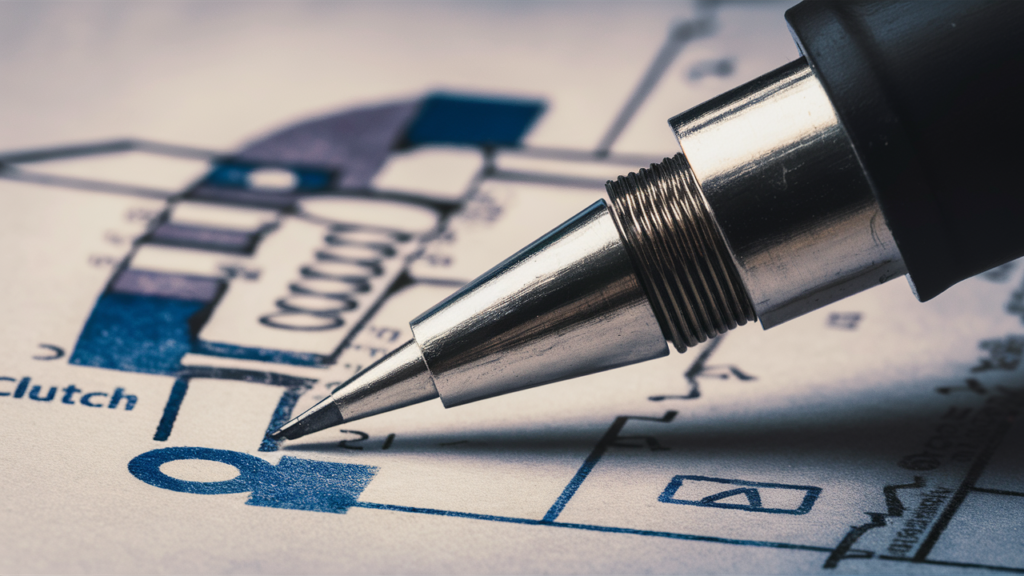
Maintenance And Troubleshooting
Mechanical pencils need care to work well. Regular maintenance keeps them in top shape. Troubleshooting helps fix common problems quickly. Here’s how to maintain and troubleshoot your mechanical pencil effectively.
Cleaning Your Mechanical Pencil
Keeping your mechanical pencil clean is essential. Dirt and debris can clog the mechanism. Follow these simple steps to clean your pencil:
- Disassemble the pencil carefully.
- Use a soft cloth to wipe the exterior.
- For the inside, use a small brush or compressed air.
- Check the lead path for any blockages.
- Reassemble the pencil after cleaning.
Regular cleaning can prevent common issues. It also extends the life of your pencil.
Solving Common Issues
Mechanical pencils can face several issues. Here are some common problems and how to fix them:
| Issue | Solution |
|---|---|
| Lead Breaks Frequently | Use softer lead or adjust the lead feed. |
| Lead Not Advancing | Check for lead jams. Clean the lead path. |
| Button Stuck | Clean around the button with a soft cloth. |
| Lead Worn Down Too Fast | Try a thicker lead or reduce pressure while writing. |
Following these steps helps keep your mechanical pencil functional. Quick fixes lead to less frustration.
The Environmental Impact
The use of mechanical pencils offers both benefits and challenges. Understanding their environmental impact is crucial. Let’s explore how they compare to traditional pencils.
Compared To Traditional Pencils
Mechanical pencils differ significantly from traditional wooden pencils. Here are some key points:
- Material Usage: Traditional pencils use wood, which involves cutting down trees.
- Longevity: Mechanical pencils last longer. Users replace the lead, not the pencil.
- Waste: Wooden pencils create more waste. They leave shavings and broken pieces.
In contrast, mechanical pencils generate less waste. They can be reused many times. This reduces the demand for new materials.
Recycling And Sustainability Efforts
Recycling mechanical pencils can be challenging. Many parts are made of plastic. Here are some recycling facts:
| Material | Recyclable? |
|---|---|
| Plastic Body | Usually No |
| Metal Components | Yes |
| Lead Refills | No |
Many companies focus on sustainability. They create mechanical pencils from recycled materials. Some brands offer refillable options. This reduces waste and promotes recycling.
Choosing brands that support eco-friendly practices makes a difference. Opt for pencils made from sustainable resources. Look for programs that promote recycling.
Choosing The Right Mechanical Pencil
Finding the right mechanical pencil can greatly enhance your writing experience. Many options exist, and understanding key features helps in making a smart choice. This guide covers factors to consider and recommended brands.
Factors To Consider
Several factors play a crucial role in selecting a mechanical pencil:
- Lead Size: Common sizes are 0.5mm, 0.7mm, and 0.9mm. Smaller sizes provide finer lines.
- Grip: Look for a comfortable grip. A rubberized or textured grip can help.
- Material: Mechanical pencils come in plastic, metal, or a mix. Metal offers durability.
- Mechanism: Check the lead advancement. Some use a push button, while others have a twist mechanism.
- Weight: Choose a weight that feels comfortable. Heavier pencils can feel more stable.
Recommended Brands And Models
Here are some top brands and models:
| Brand | Model | Lead Size | Material |
|---|---|---|---|
| Uni-ball | Kuru Toga | 0.5mm | Plastic |
| Staedtler | Mars Technico | 0.7mm | Metal |
| Pentel | GraphGear 1000 | 0.5mm | Metal |
| Paper Mate | Clearpoint | 0.7mm | Plastic |
| Zebra | DelGuard | 0.5mm | Plastic |
These brands offer reliable and high-quality options. Explore different models to find one that suits your style.
Frequently Asked Questions
How Does A Mechanical Pencil Function?
A mechanical pencil functions through a simple mechanism. When you press the button or twist the barrel, it advances the lead. This allows you to write without sharpening. The lead is usually made of graphite, ensuring smooth writing. This design makes it convenient for precise work.
What Are The Parts Of A Mechanical Pencil?
A mechanical pencil consists of several key parts. These include the barrel, lead, eraser, and mechanism. The barrel holds the lead and houses the mechanism. The lead is pushed forward using the mechanism when you apply pressure. The eraser helps to correct mistakes easily.
Can You Refill A Mechanical Pencil?
Yes, you can refill a mechanical pencil. Most models allow you to replace the lead easily. Simply remove the eraser or tip to access the lead chamber. Insert new lead of the appropriate size. This feature makes mechanical pencils cost-effective and sustainable for long-term use.
What Types Of Lead Are Used In Mechanical Pencils?
Mechanical pencils use various lead types, primarily graphite. Common sizes include 0. 5mm, 0. 7mm, and 0. 9mm. Some pencils can accommodate colored lead for artistic purposes. The hardness of the lead can vary, affecting the writing experience. Choosing the right lead enhances precision and control.
Conclusion
Understanding how a mechanical pencil works reveals its clever design and functionality. These tools combine precision and convenience for writers and artists alike. With a simple click, you can enjoy a continuous flow of graphite. Embracing this innovation enhances your writing experience, making every line smoother and more accurate.

